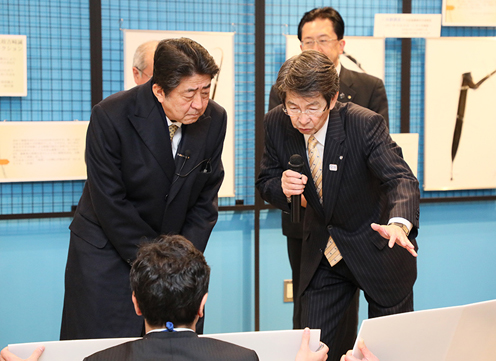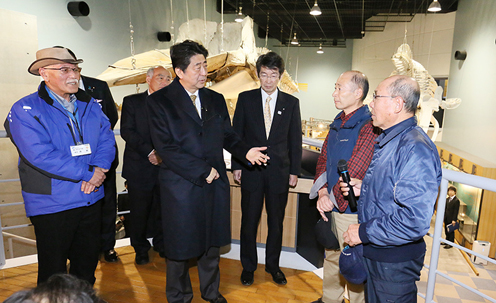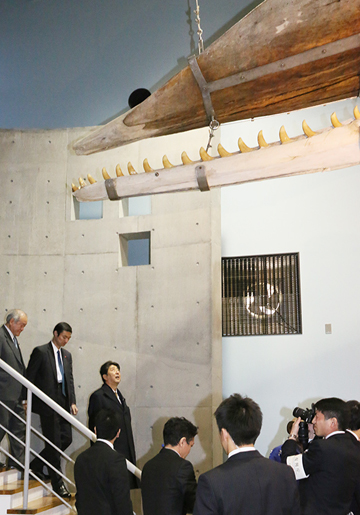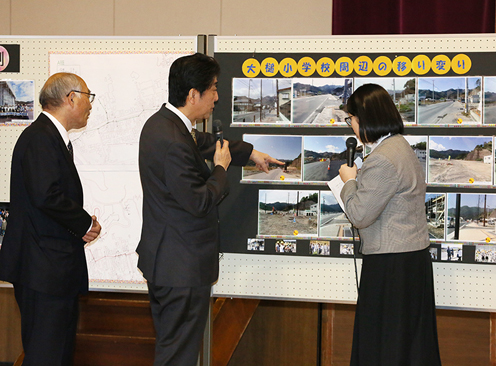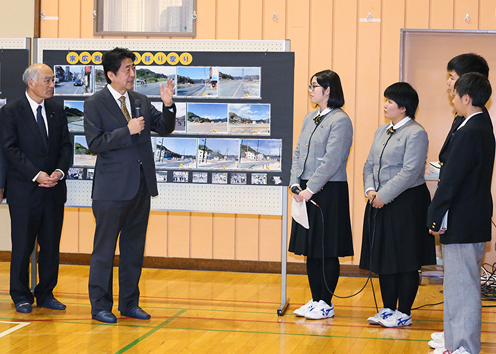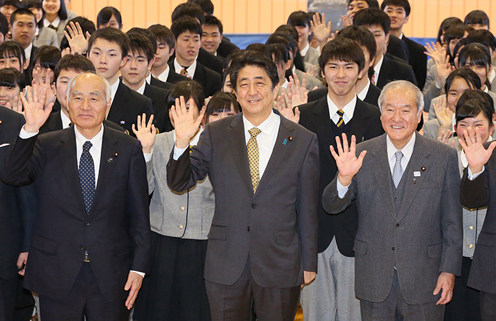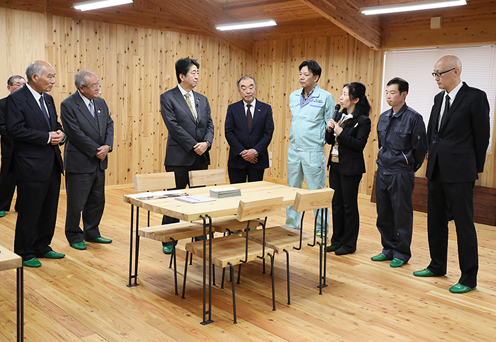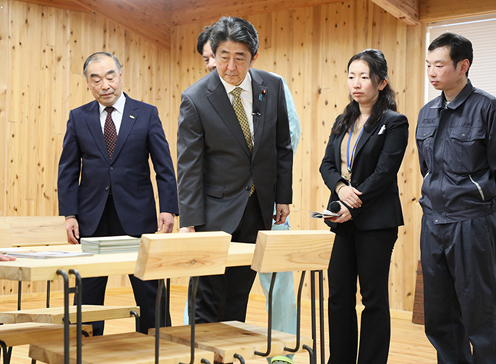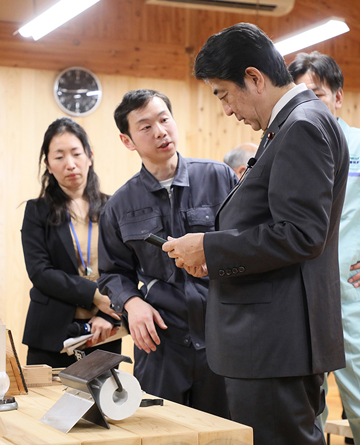Home > News > The Prime Minister in Action > December 2017 > Visit to Iwate Prefecture
The Prime Minister in Action
Visit to Iwate Prefecture
December 20, 2017

Photograph of the Prime Minister visiting Iwate Prefectural Otsuchi High School (1)
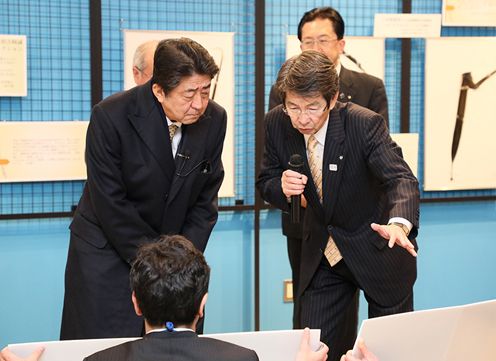
Photograph of the Prime Minister visiting the Whale and Science of Sea Museum (1)
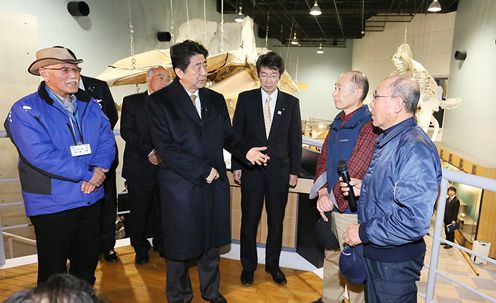
Photograph of the Prime Minister visiting the Whale and Science of Sea Museum (2)
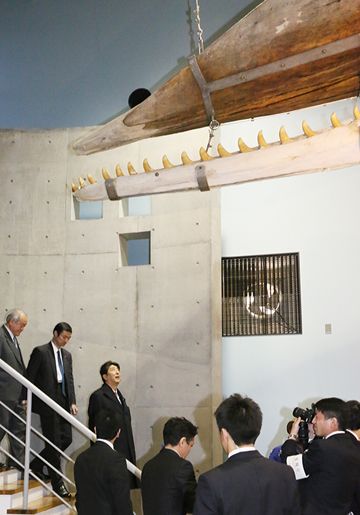
Photograph of the Prime Minister visiting the Whale and Science of Sea Museum (3)

Photograph of the Prime Minister visiting Iwate Prefectural Otsuchi High School (2)

Photograph of the Prime Minister visiting Iwate Prefectural Otsuchi High School (3)
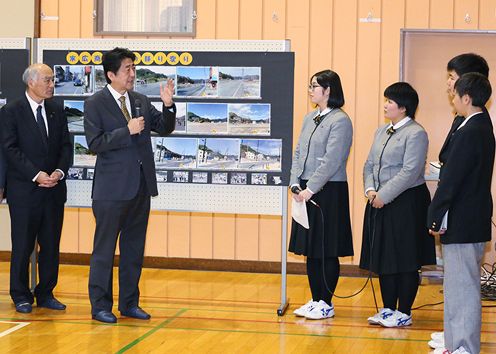
Photograph of the Prime Minister visiting Iwate Prefectural Otsuchi High School (4)
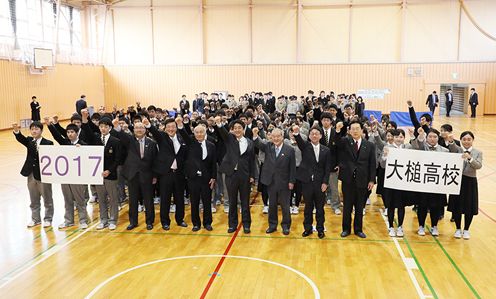
Photograph of the Prime Minister visiting Iwate Prefectural Otsuchi High School (5)
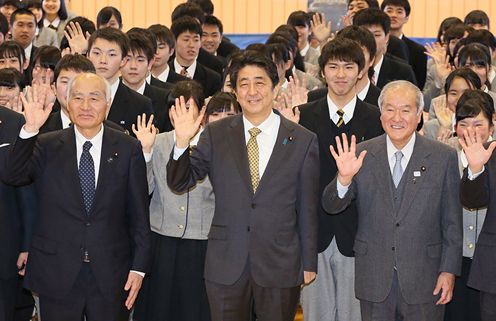
Photograph of the Prime Minister visiting Iwate Prefectural Otsuchi High School (6)
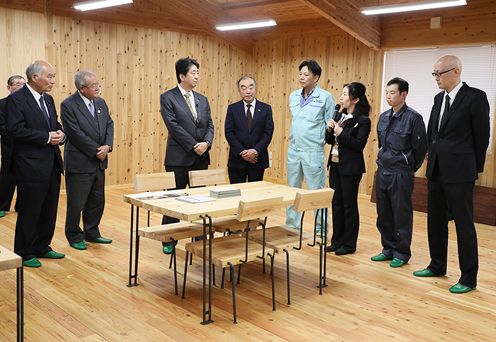
Photograph of the Prime Minister visiting the Kamaishi Forest Owner’s Association (1)
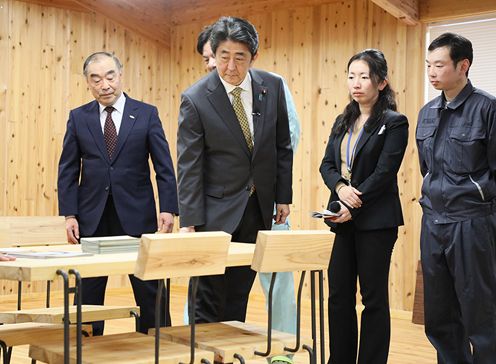
Photograph of the Prime Minister visiting the Kamaishi Forest Owner’s Association (2)
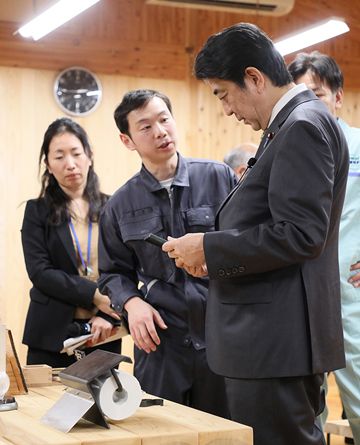
Photograph of the Prime Minister visiting the Kamaishi Forest Owner’s Association (3)
On December 20, 2017, Prime Minister Shinzo Abe visited Iwate Prefecture.
In Yamada Town, the Prime Minister visited the Whale and Science of Sea Museum, which reopened in July 2017, and saw its exhibitions. Afterwards, the Prime Minister visited Iwate Prefectural Otsuchi High School in Otsuchi Town, and offered encouragement to the high school students who are engaged in activities to contribute to the restoration of the local area. The Prime Minister then visited the Kamaishi Forest Owner’s Association in Kamaishi City, and observed manufacturing utilizing local materials.
After the visit, the Prime Minister said,
“Today I observed areas in Iwate Prefecture that sustained a great deal of damage from the tsunami. March 11, 2018 will mark a full seven years since the earthquake. Although reconstruction is only half complete, the restoration work is definitely making progress as a result of the will of all the local people, who have made tireless efforts towards reconstruction during this period of almost seven years. On this visit, I again felt the local people’s strength and passion towards reconstruction.
In Yamada Town, the Whale and Science of Sea Museum has reopened at last, which was made possible by the contributions of local people, staff, and volunteers seeking to revive the town’s symbol. I encourage many people to come and see what is said to be the world’s biggest mounted specimen of a sperm whale.
As for Otsuchi High School, it served as an evacuation center that welcomed the people of the town. While being affected by the disaster themselves, high school students served as the staff running the evacuation center, and in that very difficult situation, the students worked very hard to further improve the environment of the evacuation center. I was told that in order to pass on these experiences of previous students and also to draw on the experiences in case anything were to happen in the future, a reconstruction study group was established and conducts fixed-point observations. They said they would like to leave a record of how the town is recovering. I felt greatly encouraged listening to them tell me that their motive in carrying out these activities is their love for their town. The strength of these young people will be a powerful driving force in promoting the reconstruction. I hope that even after the students graduate, they will continue to work hard, also for the good of their town.
Here in Kamaishi, a new pilot program has begun for manufacturing utilizing wood and steel, which are materials that this area boasts. I sensed the town’s ambition to grow from this area the buds of new ‘nariwai,’ or occupations and livelihoods that sustain people’s daily lives, pooling the wisdom of both local people and those who come from other places. We will also put efforts into the revitalization of forestry, one of the nariwai of the area.
The Government will fully support the reconstruction work. There can be no revitalization of Japan without the reconstruction of Tohoku. This is the basic position of the Abe administration. I have come away with a renewed sense that we will not be able to achieve reconstruction without the will of the local people. While there is a variety of issues, including Fukushima, we will continue to exert our full efforts towards reconstruction, while paying close attention to the feelings of the local people.”


